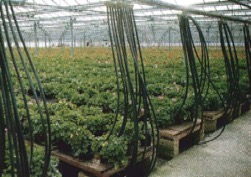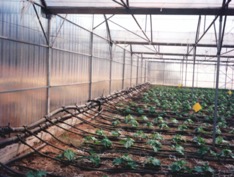SUSTAINABLE LOW-ENTHALPY AIR CONDITIONING FOR GREENHOUSE
For achieving the objectives
Agenda 2030

ENEA has developed a sustainable low-enthalpy air conditioning system for greenhouse cooling/heating. Heating occurs through radiant heating tubes which can be coupled to heat pumps.
The system can exploit the near-surface geothermal sources, small-depth and low-temperature (<100°C) ones, available in some geographical areas such as Kenya, Uganda, Tanzania and Ethiopia.
An alternative supply can be warm wastewater deriving from industrial processes that can be recycled in a circular economy perspective.
Such technology can be transferred and adjusted to meet the needs of developing countries.
Benefits and Advantages:
- Greenhouse production with low environmental impact
- Use of renewable energy sources
- Lower fossil fuel energy consumption and reduction of carbon dioxide emissions
- Continuous crop cycles
- Cost-effectiveness
- Lower thermal pollution from geothermal water and/or warm industrial wastewater
ENEA Service:
- Technology transfer
- Technical support
- Consulting
- Training
- Design
ENEA Activities:
MODEM Project: Closed and controlled greenhouse model for South Sicily.
INNOVA Project: Innovation and valorisation of energy efficiency in Agroindustry.
Keywords: greenhouse system, energy saving, sustainable air conditioning, energy efficiency in agriculture, sustainable agriculture, renewable energy, warm wastewater recycling, geothermal source exploitation.


Low temperature geothermally-heated greenhouses.
References
Energy Efficiency Unit Department
